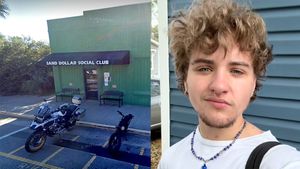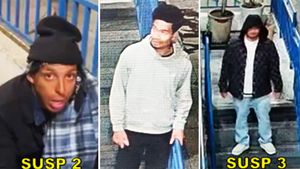(CNN) — One of the last surviving members of the Warsaw Ghetto resistance has told CNN the world must never forget the bravery of those who stood up to the Nazis, 80 years after World War II's largest Jewish uprising.
On April 19, 1943, a group of Polish Jews fought back against their German occupiers in what became known as the Warsaw Ghetto Uprising. The fighters, though small in number and lacking in resources, dared to defy the odds. While the uprising lasted just a month, it is remembered today as a heroic act of Jewish defiance during the Holocaust.
Established by the Germans in October 1940, the Warsaw Ghetto was the largest Jewish ghetto in German-occupied Europe. About 400,000 Jews were sealed off from the rest of the Polish capital behind a high wall topped with barbed wire.
Though just 15 by the time of the uprising, Aliza Vitis-Shomron — then known by her maiden name, Melamed — was actively engaged in the resistance through her involvement with a youth movement within the ghetto.
She told CNN that she acted as a messenger, warning the Jews forced to live there that the Nazis were planning to liquidate it.
Speaking to CNN from the World Holocaust Remembrance Center at Yad Vashem in Jerusalem on Wednesday, Vitis-Shomron said she and her fellow couriers acted like "the television, radio or newspapers which we didn't have."
Find out more: Remembering the Warsaw Ghetto Uprising and the people who fought back
"We would spread the news to different parts of the ghetto," she said. "I would sometimes take leaflets of news and orders and would hide them under my clothes on my body so that the Germans wouldn't catch me when they searched me.
"The messengers were not fighters but had a very important mission to complete. It was very dangerous and we knew it," she said.
Her parents had forbidden Vitis-Shomron to be involved, but she carried on, determined to play her part.
Two days before the uprising erupted, the teenager escaped the ghetto with her mother and 10-year-old sister by climbing over a wall.
Vitis-Shomron hadn't wanted to leave. "I wanted to stay and fight with my fellow fighters," she told CNN, explaining that she had sought the advice of one of the commanders within the resistance movement.
"I told her that my parents wanted me to leave the ghetto and that they had found a hiding place for me. She told me that I should go because she said 'we need someone to survive to tell our story.'"
"She knew that if I stayed I would not survive and it was more important to her that someone would be left alive to tell the story and because of that I agreed to leave the ghetto," said Vitis-Shomron, who made a commitment to tell the world what had happened after she escaped with her mother and sister on April 17.
The uprising began just two days later, after German troops and police stormed the ghetto in an attempt to deport the surviving inhabitants to concentration camps. They were unprepared for the resistance they met from the ghetto's Jewish inhabitants and the urban revolt lasted for a month.
About 700 young Jewish fighters participated in the uprising, which also saw the ghetto's civilian population resist by refusing to assemble at collection points and hiding in underground bunkers.
Vitis-Shomron recalled: "The uprising broke out two days later and I was on the other side. I remember seeing the fires over the ghetto walls and the sky glowed red and black from the fires and smoke."
But by May 16 the uprising had been crushed. At least 7,000 Jews died fighting or in hiding in the ghetto, while a similar number were captured and deported to concentration camps and extermination centers.
Among them was Vitis-Shomron's father, Simcha Melamed, who was trapped within the ghetto. He was later deported to the Majdanek concentration camp, where he was murdered on November 3, 1943.
Vitis-Shomron, her sister and their mother were eventually captured and sent to Bergen-Belsen — where they remained until US forces liberated the camp at the end of the war.
A mother, grandmother and great-grandmother, Vitis-Shomron lives today on Kibbutz Givat Oz in northern Israel. She has spent her life speaking publicly about her experiences.
In 1945, she emigrated to what was then Palestine, after losing more than 70 members of her family in the Holocaust. She told CNN: "It is important for me to tell the story, not so much my story, but how we fought bravely. If we don't tell the world how we Jews fought, the world will only look at us as victims who went like lambs to the slaughter.
"But we did fight and we did it in so many different ways. We need to tell people the truth."
Dani Dayan, chairman of Yad Vashem, told CNN that there were "countless instances of Jewish solidarity" during World War II.
He said: "The Warsaw Ghetto uprising has become the iconic representation of Jewish resistance during the Holocaust.
"But not all resistance was physical fighting. Resistance was spiritual, cultural, educational and religious. It was the basic human desire to maintain dignity even in the context of the harshest realities imaginable. These actions are not self-evident in the reality of the harsh persecution and ultimate extermination that the Jews suffered during the Holocaust. This anniversary marks all of that bravery and heroism."
The-CNN-Wire
™ & © 2023 Cable News Network, Inc., a Warner Bros. Discovery Company. All rights reserved.

















































